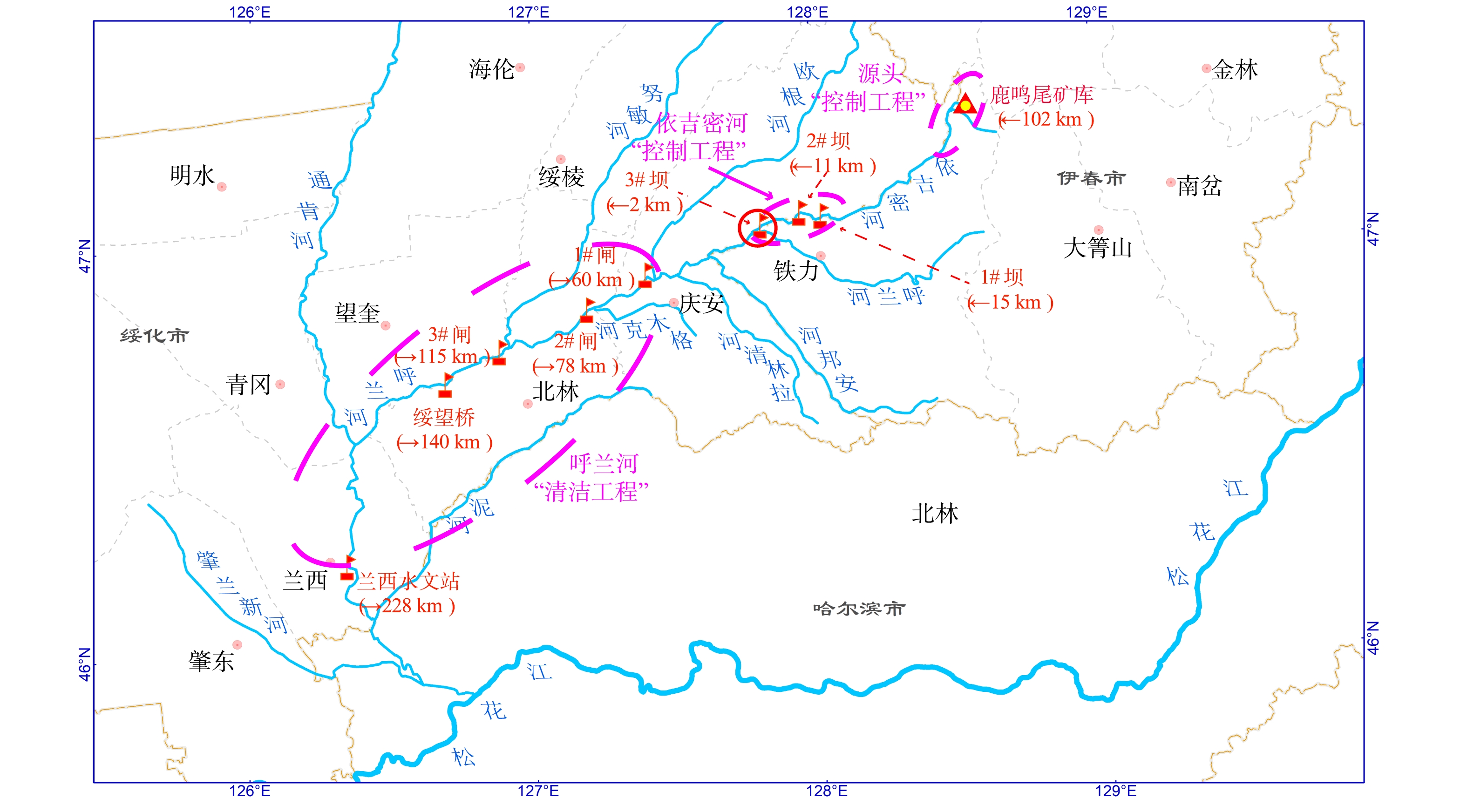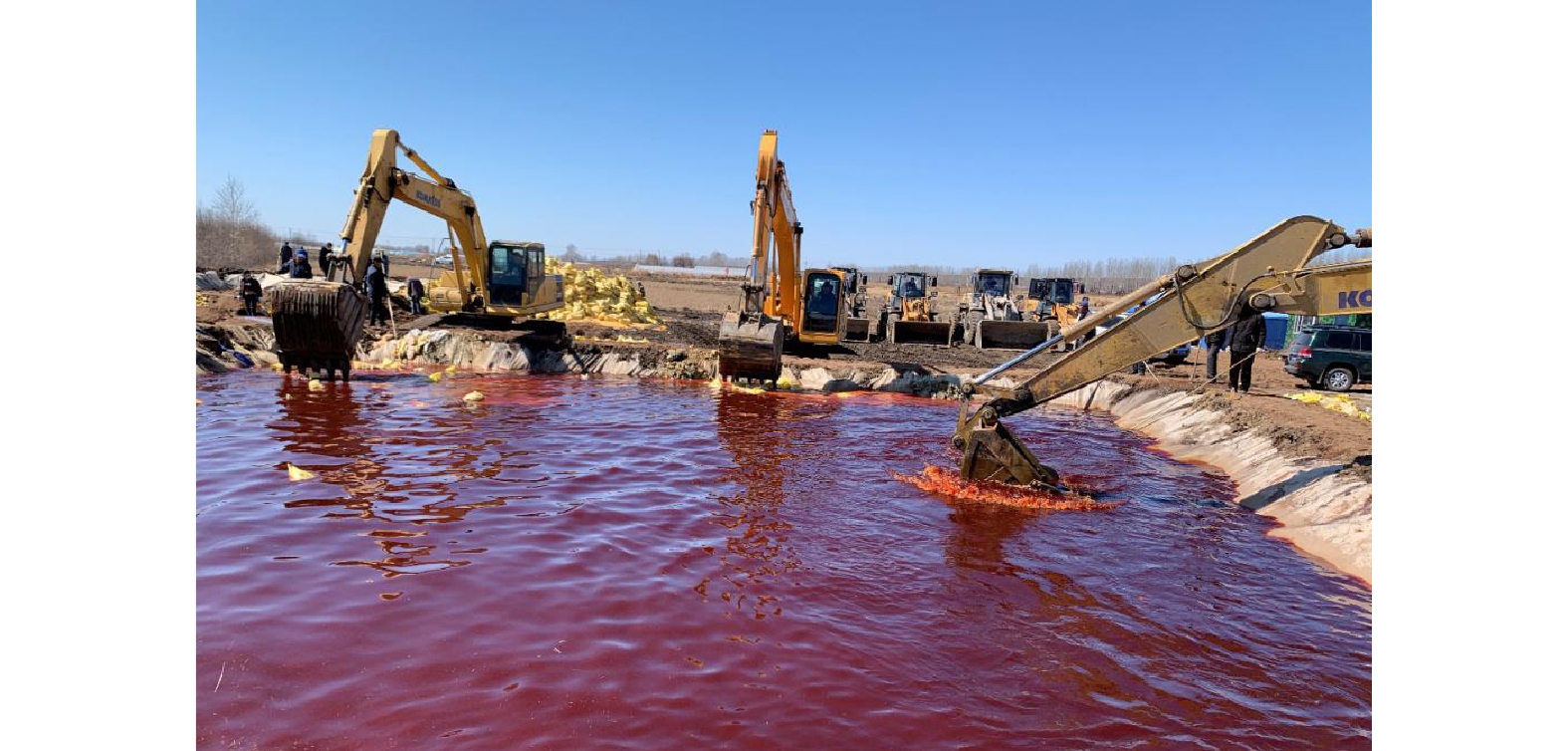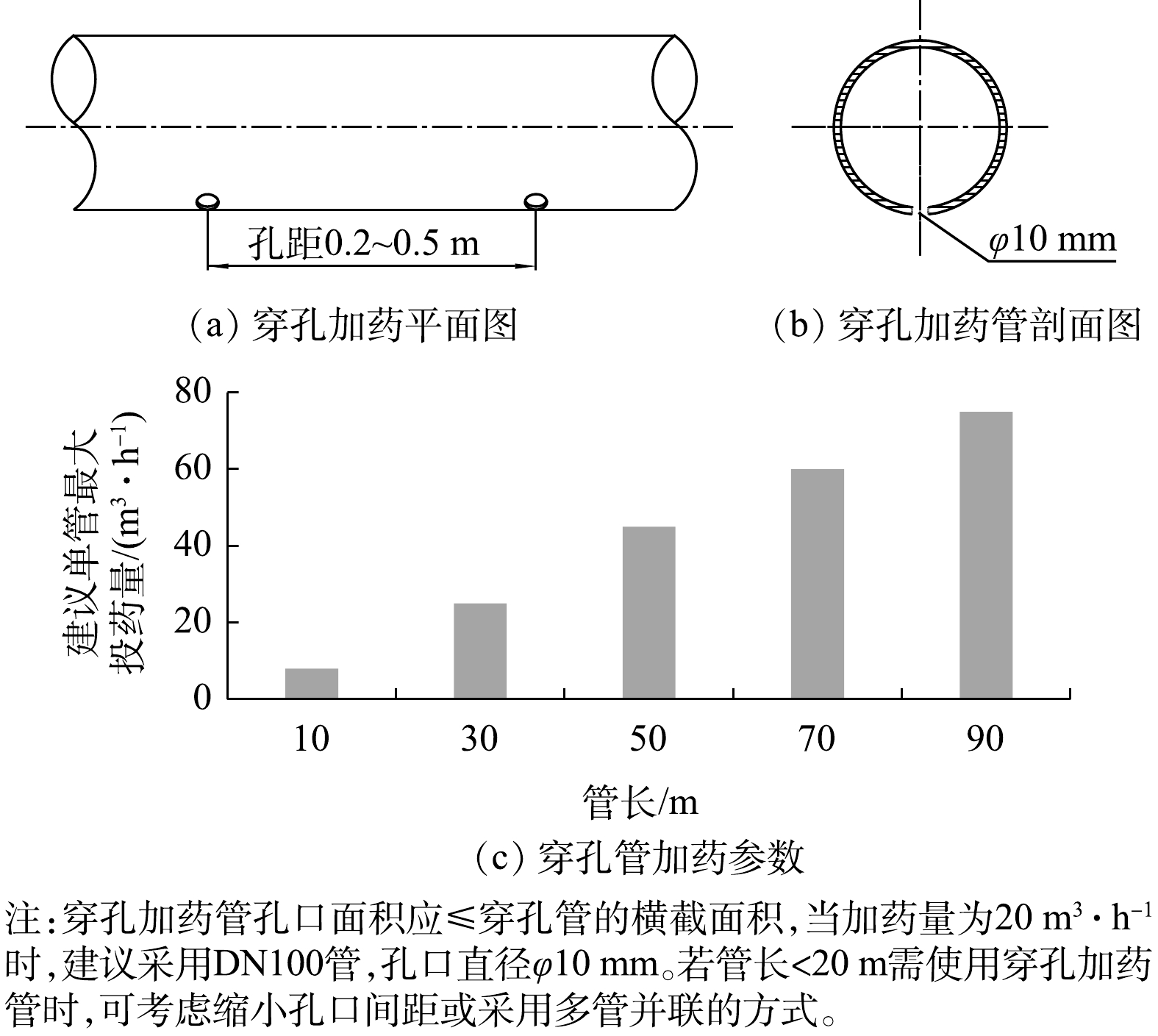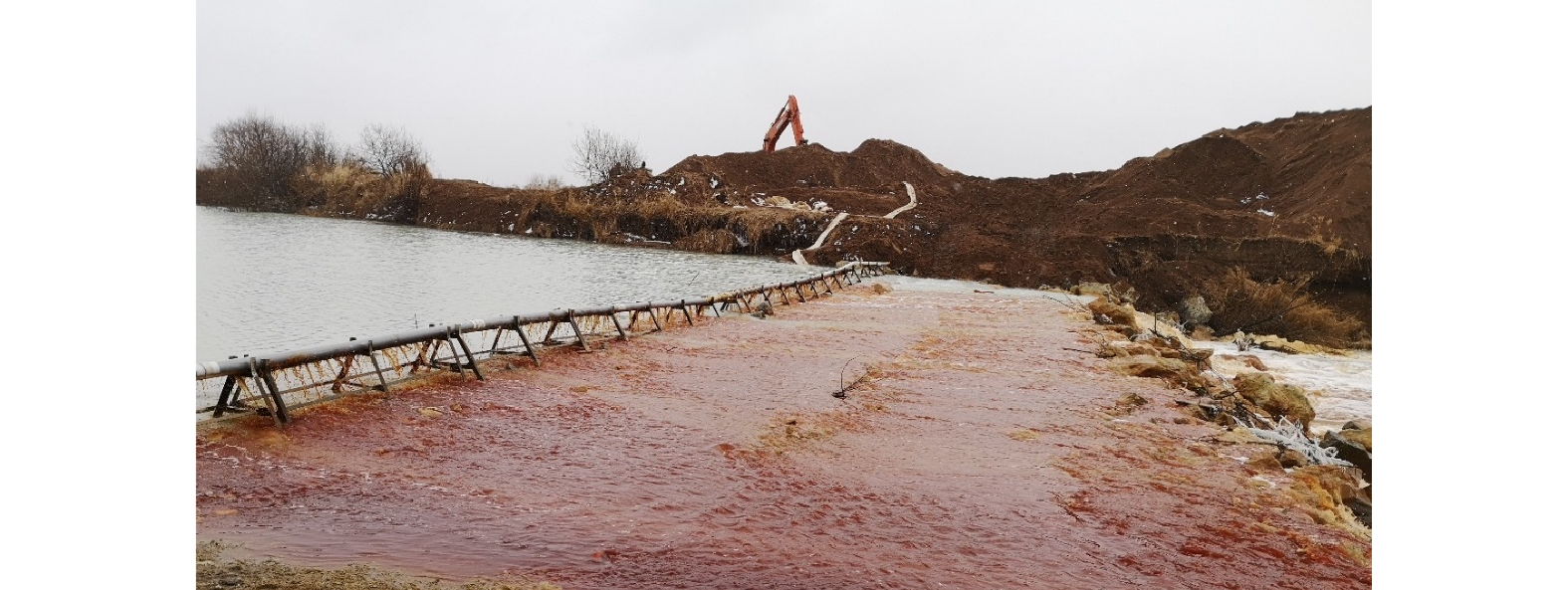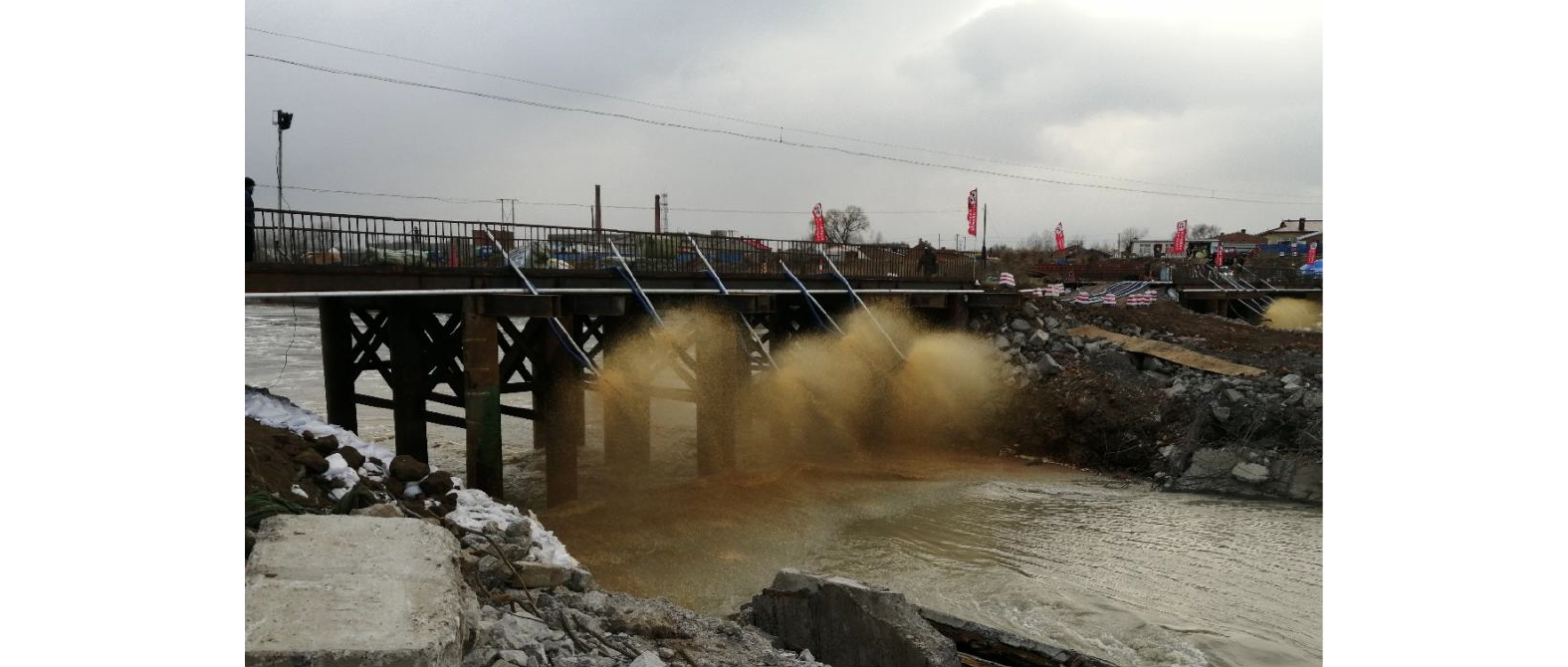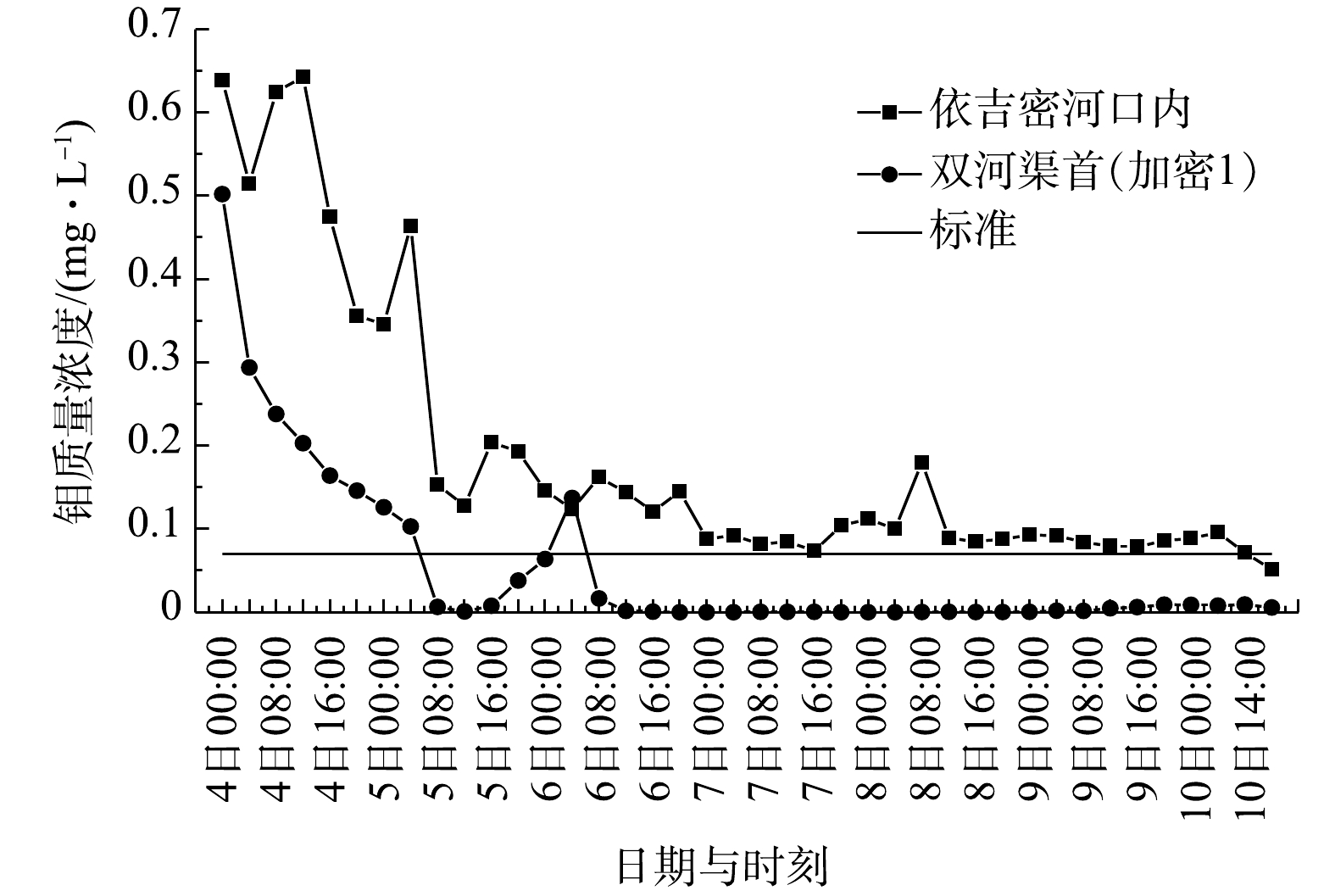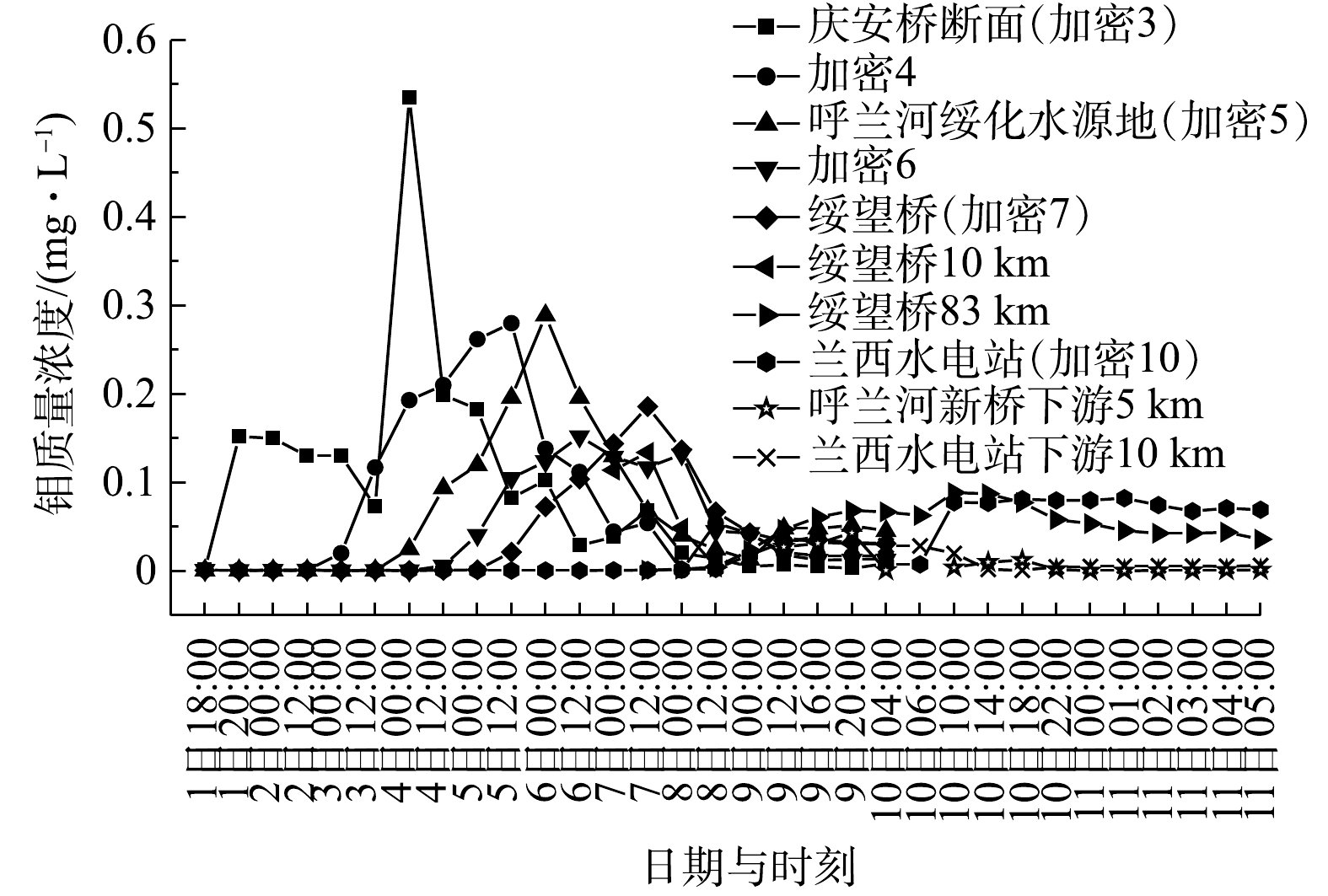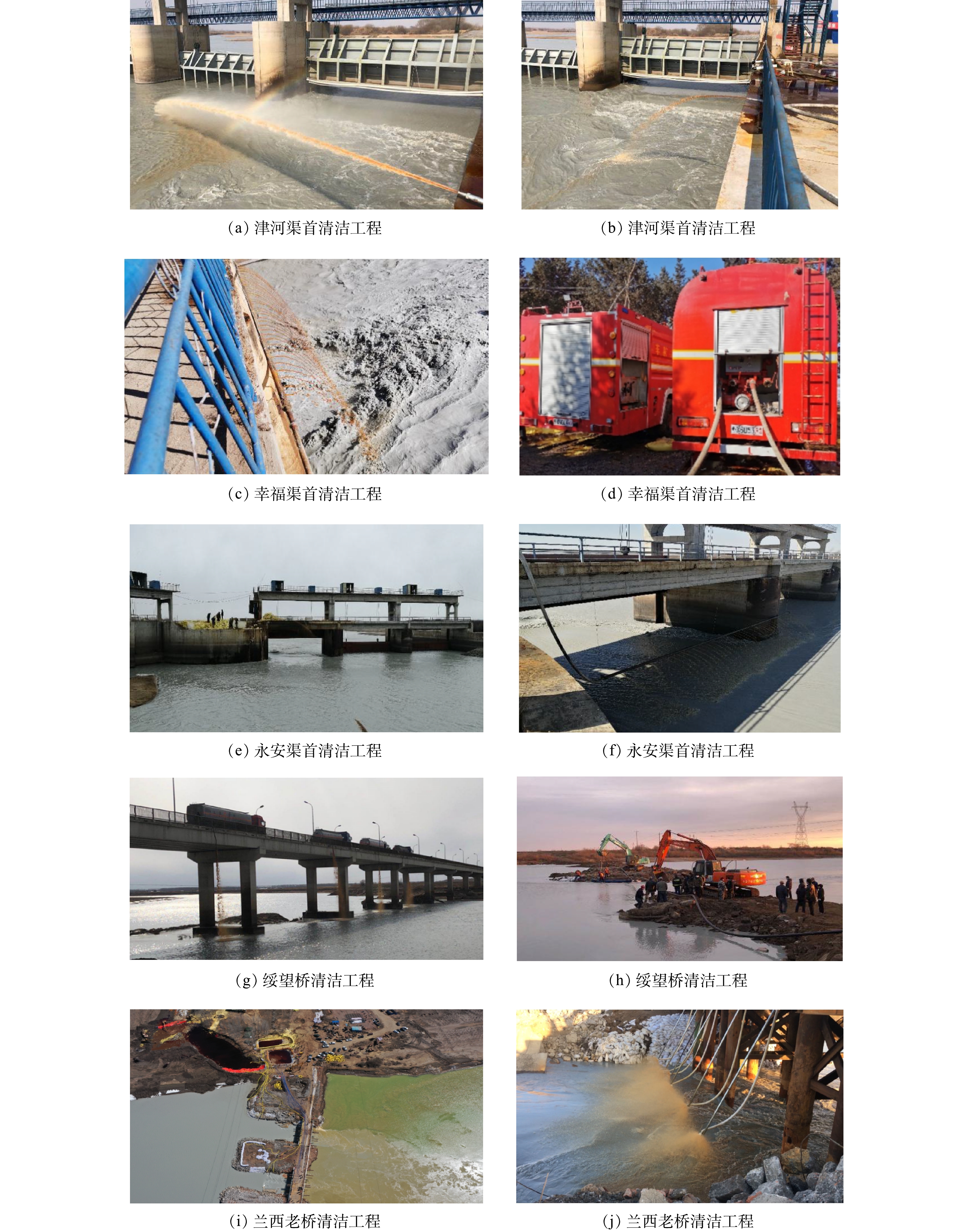-
2020年3月28日13时40分,黑龙江省伊春鹿鸣矿业有限公司钼矿尾矿库溢流井倒塌,导致约2.53×106 m3高浊度高钼污染的尾砂污水泄漏。时值黑龙江省新冠肺炎疫情防控的紧要阶段,4月18日起下游呼兰河沿线约3.33×104 hm2稻田种植须引河水泡田,故应急处置必须在短时间的“窗口期”内完成。同时,随着污染团迅速迁移,伊春铁力市、绥化市的2个自来水厂被迫停止河道取水。据测算,若污染物得不到有效处置,呼兰河入松花江钼浓度最高将超标11倍,势必造成严重的国内国际负面影响[1],形势十分严峻。如何在短时间内研发出效果佳、工程易操作的处理工艺,并快速指导地方政府实施,是实现“不让超标污水进入松花江”应急目标的重要措施。
应对突发高浓度重金属水污染事件的处理技术主要以絮凝沉淀处理工艺为主[2]。絮凝剂主要分为无机絮凝剂和有机絮凝剂2类。无机絮凝剂价格便宜,有机絮凝剂絮凝能力强,絮体容易分离。两者配合使用通常可起到一个更佳的处理效果,在使用中应注意絮凝剂的复配方式及用量。絮凝药剂较为常见有聚合氯化铝(PAC,粉剂)[3-4]、聚合硫酸铁(PAFC)[5]以及助凝剂(PAM)[6]。
针对黑龙江省鹿鸣矿业尾矿库泄漏事故污水的水质特点,选择PAC-PAM、PAFC-PAM、PAM-PAC、PAM-PAFC 4种药剂组合工艺开展研究[7-9],通过考察4种药剂组合工艺对事故污水浊度、钼的去除效果,筛选出最适宜处理工艺。通过在事故现场运行最优处理工艺,考察其处理效果及稳定性,以期为污染事故的应急处理提供依据。
全文HTML
-
实验所用水样为2020年3月29日18时30分依吉密河水源地监测断面的受污染河水。该河水是本次事故污染较重的河水,具有代表性。水质指标详见表1。如表1所示,根据河流依次流经的区域,共设置了6个采样点,各指标评价标准按《地表水环境质量标准GB 3838-2002》执行。
-
小试实验水样直接取自受污染河水。絮凝药剂主要包括PAC、PAM、PAFC 3种,根据被污染河流的水质状况及絮凝药剂的性质确定4组不同的药剂组合工艺,即PAC-PAM、PAFC-PAM、PAM-PAC、PAM-PAFC。小试实验采用2 000 mL的烧杯进行,确定每个组合工艺中2种药剂的投加量并进行试验。每组工艺根据药剂种类和药剂量的不同设置8个批次。
试验中所用药剂均为固态。聚合氯化铝(PAC)购置于上海麦克林生化科技有限公司,聚合硫酸铁(PAFC)购置于山东西亚化学工业有限公司,聚丙烯酰胺(PAM)购置于天津市科密欧化学试剂有限公司,纯度均为分析纯。浊度的测定采用浊度仪;钼的测定选用硫氰酸盐比色法[10]。
选用8个2 000 mL的烧杯,分别加入1 000 mL受污染的河水,加入絮凝剂后搅拌1 h,搅拌过程分为2 min的快速搅拌(250~300 r·min−1,凝聚阶段),50 min的中速搅拌(100~150 r·min−1,絮凝阶段)和8 min的慢搅阶段(20~30 r·min−1,沉降阶段),静置沉淀后取样分析。各组合工艺药剂种类和药剂投加量如表2所示。
1.1. 水样采集
1.2. 小试实验
-
实验探究了4种不同的药剂组合工艺(PAC-PAM、PAFC-PAM、PAM-PAC、PAM-PAFC)处理受污染河水的处理效果,如图1所示。
由图1可知,4种组合工艺都能起到很好的去浊效果,浊度去除率可达99%,但去除钼的效果却存在很大差异。PAC-PAM工艺和PAM-PAC工艺的最高钼去除率都不超过11%。PAFC-PAM工艺虽然随着药剂投加量的增加,钼去除率呈上升趋势,而最高钼去除率也只有24%。反观PAM-PAFC组合工艺,钼和浊度的去除效果均较好,去除率最高为99%。
-
依据工艺实验结果,4种组合工艺中PAM-PAFC组合工艺对浊度、钼去除效果均较好,因此,选取PAM-PAFC组合工艺为实际工程处理工艺。鉴于市场上每吨PAM和PAFC的价格分别为5 000~8 000元和1 000~2 500元,考虑到处理效果和经济成本,药剂最佳投加量选择PAM 10 mg·L−1、PAFC 300 mg·L−1。
2.1. 工艺实验效果
2.2. 应用工艺的选择
-
3月29日完成受污染河水应急处理工艺研发后,项目组3月30日开始在依吉密河进行探索性工程实施实验。实际工程验证成功后,4月2日晚,指挥部根据当前污染态势,确立了开辟“两个战场”、实施“两大工程”的总体策略。即在污染较重浊度较高的依吉密河实施“控制工程”,利用现有闸坝或人工筑坝等方式[11],采用PAM-PAFC工艺开展降浊除钼;在浊度较低的呼兰河采用投加PAFC实施“清洁工程”,通过5级投药除钼直至水质完全达标。
“两大工程”具体实施内容如下。1)依吉密河“控制工程”:用工程机械筑拦河坝挡水,一是可延缓污染团下泄,为下游争取处置时间,二是便于钼的絮凝沉淀去除工程的实施。本次应急处置构筑3道拦截坝以对泄漏污水进行拦截和导流,并投加聚丙烯酰胺(PAM)和聚合硫酸铁(PAFC),对污染水体中钼和悬浮物进行絮凝沉降去除。2)呼兰河“清洁工程”:在呼兰河利用3个水闸、绥望桥和兰西水文站等5个应急处置工程点投加聚合硫酸铁(PAFC)絮凝沉淀以削减污染水团中钼浓度。应急处置工程措施总体布置及处置工艺流程如图2所示。
-
依据小试实验结果,综合考虑处理效果和经济成本等因素,最终确定工艺最佳投药量为:PAM 10 mg·L−1、PAFC 300 mg·L−1。依此结合河道流量、投药时间等参数确定各药剂的投加量。具体工艺流程见图3。
依吉密河控制工程:流量约5~7 m3·s−1,即40×104~60×104 t·d−1,PAM加药量为10 mg·L−1,投加量为6 t·d−1,PAFC加药量为300 mg·L−1,投加量为120~180 t·d−1。按投药时间14 d计算,所需PAM和PAFC最大药剂量分别为84 t和2 520 t。
呼兰河清洁工程:流量约20~30 m3·s−1,即170×104~260×104 t·d−1,PAFC加药量为300 mg·L−1,投加量为510~780 t·d−1。按投药时间10 d计算,则需PAFC最大药剂量为7 800 t。
-
1)溶(投)药方式。PAM的溶药方式为利用鹿鸣矿业企业内现有PAM专属溶药设备,将PAM配制成含量为0.3%溶液,由消防车负责输送至100 km以外的加药点。PAFC的溶药方式为采用液体和固体2种药剂相结合,优先选择液体PAFC(固含量30%),供应不足部分采用固体。PAFC固体溶药采用现场打井取水,现场溶药配制成固含量10%的液体。
2)溶药池参数。采用现场土地开挖,最大池深不超过4 m。单池大小应满足至少5 h的投药量,设置2个(组)池子交替使用,一个(组)溶药,一个(组)投药,提高效率。池底防水布应加块石压重,以免在池内注水后防水布出现上浮现象。溶药方式可选择潜水泵混合、挖土机搅拌等多种方式。溶药池工艺见图4,现场照见图5。
3)投药操作。本次事件根据现场情况,采用穿孔加药管、非字型加药管和多管加药3种方式相结合(见图6)。利用桥梁、闸坝架设。当投药管大于20 m且投药量小于20 m3·s−1时采用穿孔加药管,否则采用非字型加药管或多管加药。穿孔加药管孔间距为0.2~0.5 m,孔口直径为φ10 mm。当管长较短又欲使用穿孔加药管时,可适当缩小孔间距,或多个穿孔管并行敷设。非字型加药管的孔间距建议>1.5 m。投药现场照片见图7和图8。
-
本次应急处置在东兴渠首和3#坝设置2个投加点,分别投加PAM和PAFC,以削减水体中的钼和悬浮物。相关加药参数见表3。
由图9可知,自依吉密河污染控制工程开始实施以来,依吉密河口内断面来水钼浓度0.5~1.0 mg·L−1的污染水团经过投药工程后稳定达标。污染物进入呼兰河后进一步稀释,双河渠首(加密1)断面在4月6日5时后已稳定达标。污染控制工程在稳定呼兰河水质和依吉密河钼浓度削减控制方面效果明显(见图10)。
-
本次应急处置在呼兰河利用3个渠首、绥望桥和兰西老桥等5个应急处置工程点投加PAFC絮凝沉淀以削减污染水团中钼浓度(相关参数见表4)。
从庆安桥断面(加密3)到“兰西水文站下游10 km”断面之间选择10个监测断面,在1日18时—11日05时进行应急监测,结果如图11所示。由图11可知,从1日20时庆安桥断面(加密3)开始超标,超标时长为109 h;在经过津河渠首、幸福渠首、永安渠首、绥望河清洁工程后,超标时长逐渐缩减至11 h,污染团峰值总体呈下降趋势;在经过“绥望桥50 km”断面后,由于河道流速变缓,污染团超标时长有所延长,但同时污染团峰值进一步削减;污染团在通过兰西老桥清洁工程后,水体已达标。因此,呼兰河“清洁工程”实施效果显著(见图12),污染团中钼浓度最高0.535 mg·L−1,超标6.6倍的水团经过“清洁工程”后稳定达标。4月11日03时,呼兰河全线实现“水质达标,水体基本复清”。
-
投加絮凝剂处理受污染河道中特征污染物的过程是将特征污染物由水相转至泥相。沉积在泥相中的絮凝产物相对较为稳定,但泥相中的絮凝产物释放钼受水体的扰动、温度、河道中泥沙含量、pH等因素的影响,亦有释放的可能。同时,考虑本次事件投加絮凝剂后在河底沉积了大量絮凝产物及河流本身的特殊性,建议对河道采取清淤处理。将受污染河道底泥经脱水至含水率80%后,交由有资质的单位处置。根据《国家危险废物名录(2016版)》中新增“危险废物豁免管理清单”规定,由危险化学品、危险废物造成的突发环境事件及其处理过程中产生的废物,在转移和处置或利用过程中可不按危险废物进行管理。
3.1. 现场应用方案
3.2. 工程参数设计
3.2.1. 投药量的确定
3.2.2. 溶药参数的确定
3.3. 工程实施效果评估
3.3.1. 依吉密河“控制工程”
3.3.2. 呼兰河“清洁工程”
3.3.3. 絮凝产物对环境的影响
-
3·28黑龙江鹿鸣矿业尾矿库泄漏事件中受污染河水具有高浊度高钼污染的特点。应急处理团队选取的4种混凝组合工艺,经小试实验验证,选择先降浊后除钼的PAM+PAFC应急处理工艺,经处理后钼浓度符合相关水质标准。本次应急处置工程从3月31日22时开始投加药剂,截至4月11日03时呼兰河钼浓度已全线达标。该处置工程将污染物的应急处置分为“控制工程”和“清洁工程”2个阶段,有目标、有步骤地解决问题,可为类似污染事故的应急处置提供参考。




 下载:
下载:
